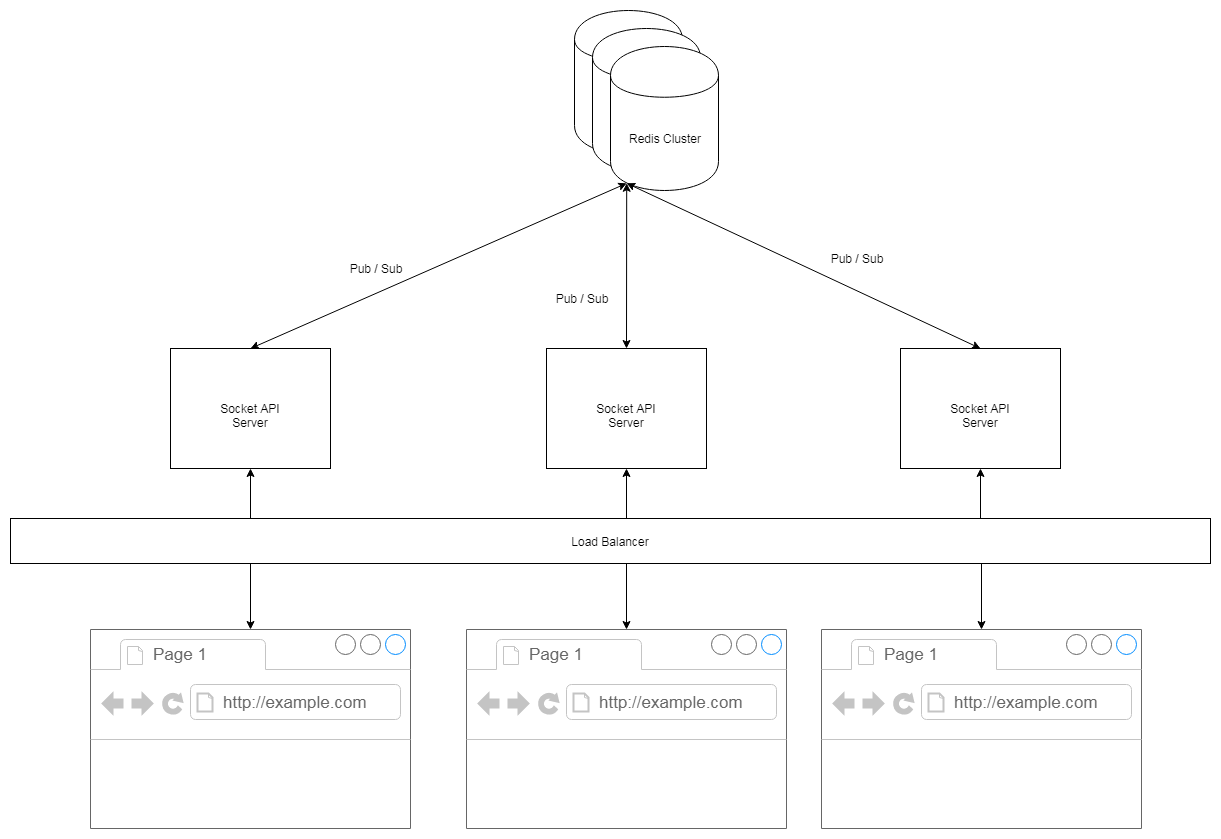Voting System
This project contains a RESTful API for Creating and Reading Campaigns and Votes, and a socket API for getting the realtime Votes of the subscribed Campaigns.
RESTful API doc is in apidoc/index.html and the POSTMAN collectin data is in VotingSystem.postman_collection.json. Socket API doc is in SocketAPI.md.
Enviroment
- NodeJs 8.9 +
- Redis 4.0 +
- MySQL 5.7.21 +
- docker-compose 1.22.0 +
Setup and Start the server for Development
The docker setup version includes redis and mysql. There is no need to edit the config.
The manual setup version needs to prepare redis, mysql yourself and edit the config according to your redis & mysql info.
by Docker
Setup details can be found in docker-compose.yml.
docker-compose up -dUse this command to see the logs:
docker logs --tail 50 --follow --timestamps voting_api-service_1The last line of the log maybe like this:
wait-for-it.sh: waiting for mysql-service:3306 without a timeout
It needs time to wait for MySQL ready. Just wait until this line occurs:
Koa API is starting at port 3000
And this command can be used to get into the container:
docker exec -it voting_api-service_1 /bin/bashATTENTION: wait-for-it.sh maybe corrupted if you clone the repo on a Window System and upload it to a Linux System. Download the zip version from the original github repo is saver.
Manually
Install dependencies:
npm i --no-save
npm i sequelize-cli -gEdit the database config in config/dev.js:
// ...
DB: {
REDIS: {
host: "YOUR_REDIS_HOST",
password: "PASSWORD",
// ...
},
MYSQL: {
username: "USER",
password: "PASSWORD",
host: "YOUR_MYSQL_HOST",
// ...
},
},
// ...Create MySQL schema:
sequelize-cli db:create
sequelize-cli db:migrateStart the server
npm run start:devor
pm2 start ecosystem.config.js --env=devAvailable APIs
GET http://localhost:3000/campaign
GET http://localhost:3000/campaign/:campaign_uuid
POST http://localhost:3000/campaign
GET http://localhost:3000/vote/:campaign_uuid
POST http://localhost:3000/vote/:campaign_uuid
GET http://localhost:3000/list
and Socket:
ws://localhost:3000
Details refer to apidoc/index.html, VotingSystem.postman_collection.json and SocketAPI.md.
Update RESTful Doc
npm run apidocVScode Debug setting
{
"version": "0.2.0",
"configurations": [
{
"type": "node",
"request": "attach",
"name": "Local Debug",
"protocol": "inspector",
"address": "localhost",
"port": 9229,
"localRoot": "${workspaceFolder}",
"remoteRoot": "${workspaceFolder}"
},
{
"type": "node",
"request": "attach",
"name": "Container Debug",
"protocol": "inspector",
"address": "localhost",
"port": 9229,
"localRoot": "${workspaceFolder}",
"remoteRoot": "/project"
}
]
}Unit Test
Setup the test db:
sequelize-cli db:create --env test
sequelize-cli db:migrate --env testthen:
npm testThere is no automatic test case for the Socket API. A manual test is in ./test/socket.html.
High Avalibility and Scalability
The RESTful Nodes are stateless so it can be Horizontally Scale up or down on demand. Also database sharding can be used to horizontal scale the Redis Cluster if necessary(The database connection code in model/Redis/notification.js and model/Redis/notification.js, the API setting in config/dev.js and the redis database config need to be modified to enable the cluster mode).
The Publication and Subscription API of Redis are used to boardcast the voting event to every Socket Node and than emitting the Current Votes to clients via Socket.io. So the Socket Node Cluster is also horizontally scalable.
Why Redis?
Redis is faster than most dbs and support data persistance, event boardcasting. Voting sometimes may face temporary high IO, but not all the time. Horizontal scaling is suitable in this case. Redis Cluster supports data sharding, it means it can be horizontal scaling easily.
Why use npm ioredis(but not npm redis)
ioredis unified the redis cluster feature better than the offical node redis library and promisified all methods by default.
Redis DB structure draft
campaigns (zset)
score: {end_time}
value: {
id => campaign_uuid(String)
title => title(String)
start_time => time(Unix)
end_time => time(Unix)
options => options(Set)
}
campaigns:{campaign_uuid} (hash)
id => campaign_uuid(String)
title => title(String)
start_time => time(Unix)
end_time => time(Unix)
options => options(Set)
options:campaign_uuid (set)
option
votes:{campaign_uuid}:{option} (set)
hkid_md5(String)
vote:{hkid_md5} (string)
{campaign_uuid} => {option}
Why Sets?
The action of adding set member is repeatable and easy for restoring data from request log.

